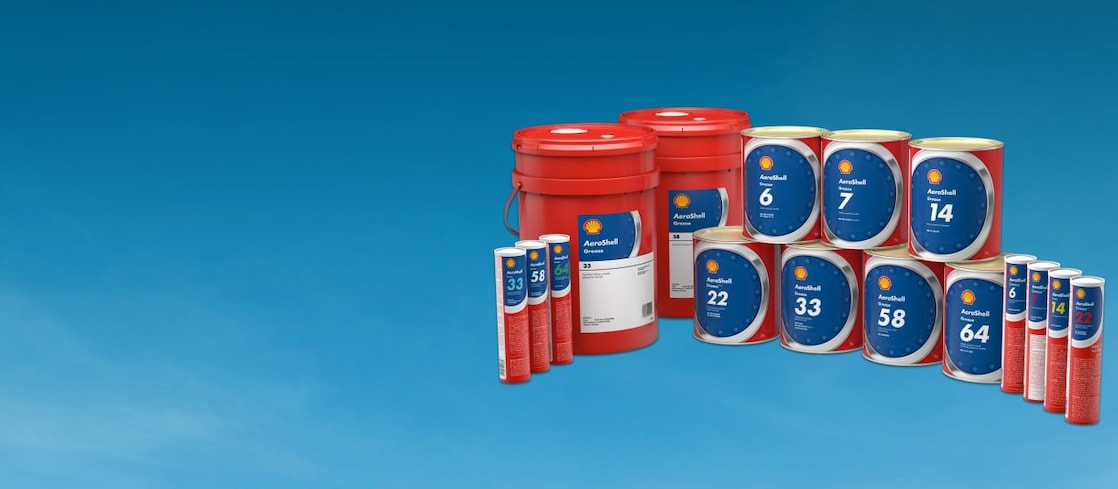
Greases
AeroShell greases offer tailored solutions to meet the comprehensive lubrication needs of the aviation industry.
Specialised greases for diverse aviation needs
Ensuring robust protection against corrosion and extreme temperatures, from wheel bearing grease to airframe grease, these lubricants provide integrity in diverse operating environments, helping to extend service intervals for a wide range of aircraft types.
Wheel bearing greases
Airframe & multipurpose greases
Features and benefits
Exceptional load-carrying capacity
Provides superior protection against wear in critical aircraft components.
Wide temperature range performance
Maintains performance from as low as -73°C, up to +177°C, suitable for extreme climates.
Advanced corrosion inhibition
Protects metal parts from rust and corrosion, enhancing longevity¹.
Optimal water resistance
Resists water washout, ensuring effective lubrication in moist environments.
Enhanced mechanical stability²
Remains stable under high shear conditions, preventing breakdown and leakage.
Versatile application range
Suitable for a wide variety of aviation needs, from helicopters to turbojets.
From the Knowledge Hub
Explore by product category

Quick links
More from AeroShell
Disclaimers
1 Comparison between ASG 33 and competitor greases, as well as the longstanding US military specification MIL-PRF-81322 greases. ASG 58 and ASG 64, developed from ASG 33’s success, have also shown strong corrosion inhibition results in tests against competitors.
2 Wheel bearing grease: ASG 58 demonstrates greater mechanical stability compared to MIL-PRF-81322 specification greases. Airframe grease: ASG 33 exhibits better mechanical stability than a competitor’s grease in extended ASTM D217 and D1843 tests.
3 Comparison made between different series of AeroShell oils, including break-in oil, ashless dispersant (AD) oil, and AD oil with added anti-wear and anti-corrosion additives.
4 Comparison between high thermal stability (HTS) oils and standard oils. Standard oils are more prone to thermal breakdown, leading to quicker coking accumulation in the engine, which can affect performance and require more frequent maintenance.
5 Comparison between AeroShell’s superclean grade fluids and competitors’ products, which may not adhere to the same cleanliness grading standards.















